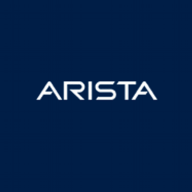

Application Control and ThreatLocker Zero Trust Endpoint Protection Platform compete in the endpoint security category. ThreatLocker Zero Trust Endpoint Protection Platform appears to have the upper hand due to its comprehensive features and broader security coverage.
Features: Application Control offers straightforward application whitelisting, permissions control, and allows only approved applications. ThreatLocker covers a broader security spectrum with complete endpoint lockdown, dynamic approach, and policy-driven access controls.
Ease of Deployment and Customer Service: Application Control has a simple deployment process with effective customer service, ideal for straightforward implementation. ThreatLocker, with its extensive features, presents a more complex deployment but is supported by comprehensive customer service, suiting organizations with intricate security needs.
Pricing and ROI: Application Control is cost-effective, with attractive setup costs and faster ROI, suitable for budget-conscious businesses. ThreatLocker, despite higher initial costs, offers greater returns through enhanced security capabilities, justifying the investment for businesses focused on extensive security measures.
| Product | Market Share (%) |
|---|---|
| ThreatLocker Zero Trust Endpoint Protection Platform | 22.7% |
| Application Control | 2.3% |
| Other | 75.0% |


| Company Size | Count |
|---|---|
| Small Business | 32 |
| Midsize Enterprise | 4 |
| Large Enterprise | 3 |
Application Control provides robust security management by allowing administrators to define which applications can run on user devices, enhancing protection against unauthorized software and potential cybersecurity threats.
In-depth customization and centralized management capabilities make Application Control a reliable choice for enterprises aiming to maintain strict security policies while ensuring efficient resource management. Its ability to restrict unwanted applications and streamline software usage increases compliance and minimizes potential vulnerabilities.
What features make Application Control valuable?Application Control is widely adopted across industries such as finance, healthcare, and government sectors where data protection and regulatory compliance are critical. It efficiently manages applications on a network scale, ensuring only sanctioned software operations while providing strategic insights through comprehensive reporting.
ThreatLocker Zero Trust Endpoint Protection Platform offers robust endpoint security through application control and allowlisting, safeguarding servers and workstations from unauthorized software execution.
ThreatLocker Zero Trust Endpoint Protection Platform provides extensive application control with features like ring-fencing and selective elevation, ensuring meticulous execution management. Offering learning mode and extensive support, it integrates threat detection and activity monitoring to enhance compliance, reduce costs, and bolster cybersecurity through alerts and approvals. Despite its strengths, there are areas for improvement in training flexibility, policy updates, and interface enhancements, along with challenges in handling non-digitally signed software. Deployed across environments, it works well with existing cybersecurity instruments for real-time threat prevention.
What are the top features of ThreatLocker?ThreatLocker Zero Trust Endpoint Protection Platform is widely implemented to safeguard IT infrastructures against unauthorized access and application use. In sectors where data security is paramount, this platform enables users to prevent unauthorized software installations and control device applications, ensuring real-time threat prevention and compliance with industry regulations.
We monitor all Application Control reviews to prevent fraudulent reviews and keep review quality high. We do not post reviews by company employees or direct competitors. We validate each review for authenticity via cross-reference with LinkedIn, and personal follow-up with the reviewer when necessary.